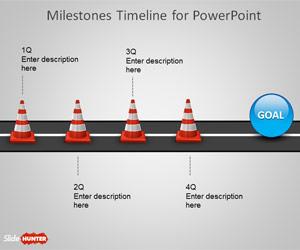When Mastery Matters: Why Engineering Leaders Should Set Occasional Finish Lines
When Mastery Matters: Why Engineering Leaders Should Set Occasional Finish Lines

Introduction: The Paradox of Perpetual Growth
If you’re an engineering leader, you know the drill—constant change, endless iteration, and the ever-present hum of improvement. We celebrate the growth mindset as gospel: fail fast, adapt faster, always keep moving. But here’s the twist that’s been gnawing at me lately: what if this relentless chase for growth sometimes keeps us from mastering anything at all?
And that got me thinking. In engineering—and in leadership—we’re often caught in a similar loop. Always “in beta,” never quite done. Agile sprints replace marathons, and the finish line keeps moving. But what if, now and then, we aimed for real mastery? What if we drew a line in the sand and said, “This is what we’re bringing across the finish line”? Could that shift unlock something deeper—not just for ourselves, but for our teams too?
In this article, I’ll dig into why mastery goals matter for engineering leaders, how they reshape motivation and results, and why they’re crucial to building both confidence and resilience in high-velocity environments.
Let’s borrow a useful lens from organizational learning: the exploration vs. exploitation model. Exploration—constant growth—keeps us nimble. Exploitation—true mastery and completion—locks in our progress. Both are vital. The trick is knowing when to shift gears.
Going Beyond Daily Progress: The Power of Mastery Goals
There’s real value in consistency. Most meaningful progress—personally and professionally—comes from showing up day after day, running retrospectives, and refining processes one week at a time. But if I’m honest? My sharpest leaps didn’t come from incremental improvement. They came when I set a clear mastery goal—a point where “done” actually meant something.
Earning a technical certification wasn’t just another item on my to-do list; it was a stretch that forced me to go deeper and prove I could deliver. Launching a product publicly meant every last detail had to be right—not just good enough to iterate on later. These moments demanded more than just steady growth—they required excellence, under pressure, with a visible end in sight.
For engineering leaders, mastery goals might look like completing a complex system rewrite, mentoring someone through to promotion, or seeing an ambitious project all the way from idea to launch. Unlike routine tasks or ongoing learning, these goals force us to polish our skills until they’re truly ready for showtime.
The research backs this up. According to SelfDeterminedLife, “Mastery goals work because they motivate people to learn and grow… you are challenging yourself, pushing your own boundaries, and driving your own development.” For leaders who want real breakthroughs—both personally and within teams—this kind of self-driven progress can be transformative.
This isn’t about dismissing daily improvement. Far from it. It’s about recognizing that mastery goals—when set intentionally—pull us out of the safety of routine and into spaces where real transformation happens.

Motivation with a Finish Line: How Clear Endpoints Change the Game
Chipping away at improvement is valuable—but when there’s a real endpoint in sight? That’s when things shift. I’ve felt it myself and seen it on my teams: motivation sharpens when everyone knows exactly what “done” looks like.
Suddenly, the goal isn’t just “get better,” but “cross this specific finish line.” Deadlines stop feeling like artificial pressure and become markers of progress. Feedback gets crisper. Energy ramps up. The grind turns purposeful.
Let’s pause here for a second… You’ve probably heard of SMART goals (Specific, Measurable, Achievable, Relevant, Time-bound). They’re everywhere in engineering and project management for good reason: they make goals actionable and clear. When you apply that rigor to mastery goals, alignment gets easier—and so does celebrating success when you hit the mark.
In team settings, this clarity is gold. Instead of endless rounds of iteration with no visible payoff, there’s something real at stake—a release date, an exam passed, a migration completed. The entire team rallies behind that shared purpose. Commitment intensifies.
Locke and Latham’s research on goal setting puts it bluntly: “ALWAYS HAVE CLEAR AND SPECIFIC BUSINESS OBJECTIVES BY LISTING SPECIFICALLY WHAT TO DO UNTIL WHEN… Now the employee or the person knows exactly what to do and until when.” That kind of clarity transforms good intentions into concrete milestones—and fuels engagement every step of the way.
But not all mastery goals are created equal. The challenge needs to be tough enough to stretch you or your team—but not so overwhelming that it leads to frustration. As Locke and Latham put it: “The secret is keeping the challenge at the right amount… their goals should also give the feeling of ‘(it was difficult but..) I made it!’”
Looking back, my most memorable work moments weren’t about perfection—they were about that burst of energy as we pushed toward a launch or wrapped up something big. There was doubt along the way; more than once I wondered if we’d bitten off too much. But seeing it through delivered a kind of satisfaction that stuck long after the confetti settled.
The Psychological Value of Completion
If you’ve led engineering teams for any length of time, you know the feeling: there’s always another bug to fix, another feature to ship, one more improvement before calling it quits. That sense of being “never done” can be both fuel—and friction.
But here’s what neuroscience tells us: finishing something matters. Completing a task triggers dopamine—a neurochemical reward tied directly to motivation and satisfaction. It’s how we wire ourselves for productivity and future ambition.
Deliberately finishing—a product launch, a certification earned, even closing out a tough quarter—gives us rare moments of closure. These aren’t just boxes checked; they’re milestones that linger because they’re intentional.
Of course, resistance is normal here. Declaring something done can feel uncomfortable—especially if you’re wired for endless improvement like most engineers are. But when you take a project across the line with intention, people notice. It signals reliability and depth—not just to others but to yourself.
For leaders and teams alike, these deliberate endings build lasting confidence and resilience. They serve as reminders that yes, we can finish things—even in tech environments where the work is never truly over.
Research by the Engineering Management Institute drives this home: “Setting clear, specific, and measurable goals is fundamental… Whether it’s enhancing a product’s efficiency, mastering a new technology, or completing a project within a specific time frame, clarity in objectives forms the foundation for navigating engineering success.”
Clarity around endpoints gives teams permission to finish strong—and gives leaders space to pause before pivoting to new challenges.
If you want more ideas on how leaders can navigate expectations and drive lasting value beyond just meeting every request, check out navigating expectations as an engineering leader.
Mastery Goals: Guardrails Against Burnout and Drift
When every goal is open-ended—when nothing ever feels truly finished—purpose starts slipping away. Motivation fades as effort feels untethered from outcomes. Over time, it’s easy to drift toward disengagement—or even resentment toward work you once loved.
Some companies get this right by setting ‘done-done’ criteria for major projects (Atlassian comes to mind). This isn’t just process theater—it’s a lifeline that protects teams from scope creep and creates healthy cycles between effort and rest.
Choosing the right mastery goals provides guardrails against this drift. By defining what “done” actually means—and making space for meaningful celebration—leaders can keep themselves and their teams energized instead of depleted.
This isn’t about chasing arbitrary finish lines or falling into perfectionism; it’s about granting yourself (and your team) permission to cross something important off the list and recharge before taking on what’s next.
GrowthSpace explains: “Mastery remains a cornerstone of motivation… This shift from a deficit-based approach to a strengths-based approach can lead to higher engagement and better performance.”
I’ve hit burnout more than once—sometimes from chasing hollow goals with no payoff; other times from pouring myself into work that never seemed to end. But when I chose mastery goals that aligned with my values (and my team’s needs), I found energy instead of exhaustion—and built credibility along the way.
For more strategies on how leaders can prevent team burnout while still aiming high, see lead for sustainability: prevent team burnout.

Conclusion: Integrating Mastery into Growth-Driven Leadership
If you’re wired for growth—and most engineering leaders are—declaring anything “done” might feel awkward at first. Maybe even risky. But here’s what my own journey (and plenty of hard-won lessons) has taught me: aiming for true mastery every so often doesn’t undermine growth—it amplifies it.
Balancing daily improvement with occasional mastery deepens expertise, injects energy into motivation through clear endpoints, builds resilience through moments of completion, and guards against burnout by making effort meaningful.
Clear performance goals are non-negotiable for high-achieving teams. As JoinTheCollective notes: “The establishment of clear performance goals is a critical practice that underpins the achievements of individuals and teams… direction, motivation, planning, accountability—all essential for reaching organizational objectives.”
- Identify high-impact opportunities: Seek out projects or skills where true excellence (with a visible finish line) will move the needle—for you or your team.
- Define clear endpoints: Spell out exactly what “done” means for each mastery goal (what will be delivered and by when).
- Commit publicly: Share your goal with your team or peers—it builds accountability and creates momentum.
- Celebrate completion: When you hit your milestone, mark the moment; reflect on what you’ve learned before diving into the next challenge.
- Balance mastery with ongoing growth: Alternate periods of deep focus (mastery) with phases of broader exploration or iterative improvement.
Consider starting a ‘reflect-celebrate-reset’ ritual at key milestones: pause to acknowledge what you’ve accomplished, celebrate your team’s effort, then co-create new goals together. Over time, this feedback loop embeds both mastery and growth into your leadership rhythm.
If you found these insights helpful and want more strategies on engineering leadership, growth mindset, and content strategy delivered straight to your inbox, sign up for my newsletter!
Growth doesn’t always need a destination—but sometimes reaching one is where real growth begins anew. As engineering leaders, let’s give ourselves permission not just to start strong—but to finish well.
Ultimately? Balancing relentless growth with intentional mastery is what transforms good engineering leaders into great ones. When you create space for your team (and yourself) to finish—and truly savor—work that matters most? That’s where renewal happens—and bold new ambitions take root.
For further reflection on how impactful leadership involves shifting focus from busyness to real influence (and ultimately delivering meaningful outcomes), consider reading the shift leaders make from busy to impactful.
Enjoyed this post? For more insights on engineering leadership, mindful productivity, and navigating the modern workday, follow me on LinkedIn to stay inspired and join the conversation.
You can also view and comment on the original post here .
